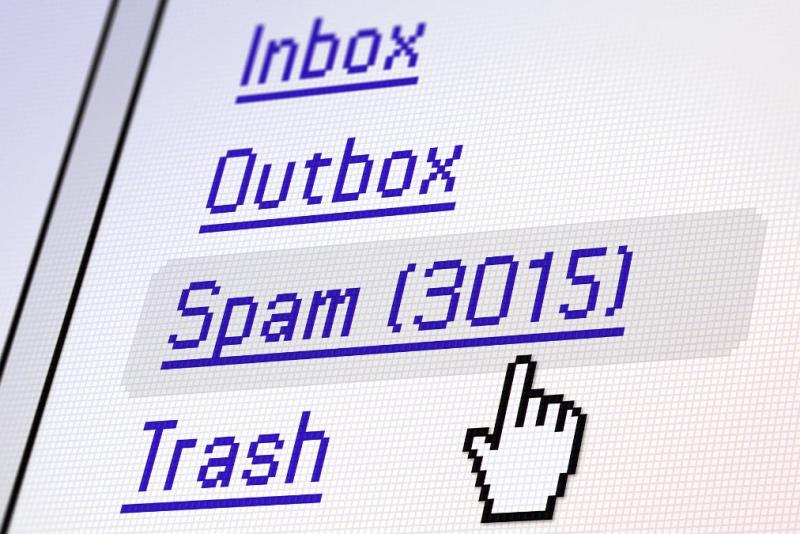Inbox and Spam are two different folders email services use to sort messages based on who sent them and what they are about. The Inbox is for important, relevant emails, while the Spam folder is for messages people don’t want or could be dangerous. The Inbox is the main folder where emails from known contacts, subscriptions, and service providers arrive. Spam, also called “Junk,” is a separate folder where messages you didn’t ask for, or that could be harmful are automatically filtered out and stored. Email providers use complex algorithms and filtering methods to differentiate between real emails and Spam. This helps protect users from phishing attacks, scams, and ads they don’t want to see.
What is Inbox?
The Inbox is one of the most important parts of email services. It is the main folder where messages arrive and are organised. When you get an email from a known contact, a subscription, or a service provider, it usually goes to your Inbox. This makes your Inbox the primary place to access and manage your legitimate email.
Filters, labels, and folders are ways email services help users manage and sort their incoming messages. You can use these tools to sort emails into different folders based on certain criteria automatically. This helps keep your Inbox from getting too cluttered and makes it easier to find important messages.
Email services usually have folders like Spam, Trash, and Sent Mail in addition to the Inbox. Each of these folders is used for a different purpose to organise and store emails. While the primary purpose of the Inbox is to receive and store important emails, the other folders help you deal with messages you don’t want or have already sent.
In short, the Inbox is an integral part of email services. It is where legitimate emails come in and are managed. It has several features and tools that help organise and sort messages, making it easier for users to access and manage their electronic correspondence.
What is Spam?
Spam, also called “junk mail,” is unsolicited or unwanted email messages that are usually sent in large numbers to many people. These messages can contain ads, phishing attempts, scams, or malware, and most email users find them annoying. Email services use complex algorithms and filtering methods to differentiate between Spam and real emails. The spam emails go to a separate folder called the Spam or Junk folder.
The main goal of the Spam folder is to keep users safe from messages that could be harmful or misleading and to keep the Inbox clear of junk. Email providers constantly change their spam-detection algorithms to keep up with evolving spamming methods and make their filtering systems more accurate.
But spam filters sometimes mistakenly mark legitimate emails as Spam. This is called a false positive. Users need to check their Spam folders regularly to ensure that important messages haven’t been mistakenly filtered. Also, users can mark messages as “Not Spam” to help the email service’s algorithms learn how to filter messages better in the future.
In short, Spam is a term for email messages that are unwanted, not asked for, or could be harmful. Email services sort these messages and put them in a separate Spam folder. This keeps users safe and maintains the Inbox from getting too cluttered.
Difference Between Inbox and Spam
An email client’s inbox and spam folders are two separate areas for storing and managing messages according to their subject matter, sender, and/or authenticity.
Purpose
The “Inbox” folder is the most important for receiving and sorting email messages legitimately sent from known contacts, subscriptions, and service providers. The Spam folder, on the other hand, was developed expressly to store unwelcome or potentially hazardous messages. This safeguards users against phishing attacks, scams, and undesirable adverts.
Filtering and Organisation
Email providers employ complex algorithms and screening strategies to sort legitimate messages from Spam. A legitimate message will be delivered to the Inbox, but it will be moved to the Spam folder if it looks suspicious or was not requested.
User Interaction
The Inbox is the primary focus of user activity, as they read and respond to messages and manage the ones that are important to them. In most cases, checking the Spam folder is the extent of your interaction with it; if necessary, you can mark false positives as “Not Spam” to improve the filter’s accuracy in the future.
Security
Users are less likely to inadvertently interact with malicious content because of the separation of Inbox and Spam folders. Email security comes from the service’s ability to filter out Spam, viruses, and other potentially harmful messages.
The primary distinctions between the Inbox and the Spam folder are purpose, filtering and organisation, user interaction, and security. The Spam folder protects users by separating unwanted or malicious emails from the rest of their Inbox and folders. It ensures that users can focus on the important messages without wading through the junk.






